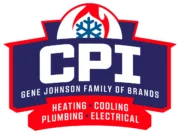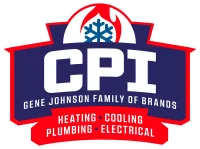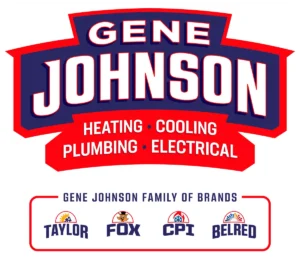Why Is My Air Conditioner Leaking Water?
Let’s face it, finding a puddle around your air conditioner is one of those moments that makes every Whatcom or Skagit County homeowner’s heart sink. Water pooling up can wreak havoc on your system and home if left unchecked – whether it’s mold spreading, drywall turning to mush, or another disastrous chain reaction. But don’t panic just yet! The reality is, most AC leaks stem from fixable problems that the experienced pros at CPI Plumbing & Heating have been solving for decades.
This guide will walk you through the typical causes behind that irksome dripping, from overwhelmed drain pans and clogged condensate lines to frozen evaporator coils or refrigerant gone rogue. We’ll cover the immediate steps for drying things up and preventing any further damage too. By the end, you’ll know if a basic DIY remedy could do the trick, or if it’s better to save yourself the headache and call in CPI’s leak detectives to restore your cool and dry sanctuary once and for all.
Risks of Not Addressing AC Water Leaks
While a simple puddle under the air conditioner may not seem like a major emergency at first glance, neglecting that moisture issue is essentially giving it a blank check to wreak all sorts of costly havoc throughout your Pacific Northwest home. Persistent leaks breed the kind of persistent dampness that mold and mildew absolutely thrive on – allowing those spores to spread undetected into drywall, behind cabinets, and anywhere else it can take root out of sight. Before you know it, dangerous black mold toxins are circulating through your vents.
Speaking of unseen damage, that steady drip-drip-drip accelerates the rotting of wooden building materials it comes into contact with too. Enough time passes and you’re looking at compromised structural integrity as floor joists, wall studs, and more slowly turn to mush from the inside out. Let’s not forget electrical system hazards either – a single zap from water hitting the wrong connection and your whole AC setup could be fried.
On top of major repair bills waiting to happen, that leak is also a glaring sign of your unit struggling inefficiently – wasting energy and spiking monthly utility costs with every drop. Procrastinating absolutely sets you up to pay a hefty price tag down the road, in more ways than one. At the first sight of AC condensation, jumping into action protects your home’s value and your family’s well-being!
Immediate Steps to Take When You Notice a Leak
Once you’ve spotted those telltale drips forming underneath your air conditioning unit, it’s absolutely critical to take immediate action before any further water damage can occur. Those initial leaks may seem insignificant at first, but left unaddressed they’ll rapidly turn into a serious headache infiltrating your Pacific Northwest home.
Your first priority? Cutting off that moisture supply at the source by shutting off the AC system entirely. Continuing operations while there’s an active leak is essentially giving any condensation the green light to keep spreading unchecked. Whether you locate the power disconnect box or just hit the thermostat, getting those components powered down prevents any additional accumulation.
From there, it’s all about containment and drying efforts. Strategically place buckets or pans wherever those drips are raining down to catch ongoing drainage. Using old towels or moisture-absorbent rags, thoroughly soak up any standing puddles that have already formed too. The less lingering condensation hanging around, the better.
If feasible, carefully inspect the areas directly around that indoor air handler for any signs of soggy drywall or moisture wicking into floors and cabinets. Catching saturation early allows you to complete vital structural drying steps before mold and mildew get a foothold. Running fans and dehumidifiers helps accelerate evaporation as well.
While containment efforts are underway, this unfortunately isn’t the time for amateur sleuthing or home remedies with your AC still offline. Resist any temptation to start poking around components – disturbing drainage pathways prematurely often does more harm than good. For now, just focus on halting any new liquid infiltration and mitigating existing spillover. Those detection and repair steps come next!
Finding the Source of the Leak
As frustrating as that growing puddle underneath your air conditioner may be, identifying the actual source of the leak proves crucial before attempting any fixes. While calling in a professional AC technician in Bellingham, WA provides the surest results, plenty of sleuthing can be done by the determined homeowner too.
The first step? Using a process of elimination to pinpoint the general area that moisture appears
to be coming from. If the drips are near the indoor air handler, the issue likely stems from an overwhelmed or obstructed condensate drain line or pan. But if you’re finding more wetness around the exterior condenser unit itself, excessive coil condensation or a refrigerant regulation problem could be the main culprit.
From there, grab a flashlight and follow that water trail as far as you can toward its origin. Inspect all the attached piping, coils, and drains for any cracks, clogs, or visible signs of mineralized buildup restricting flow. If the leak seems concentrated around the evaporator coil area, check for telltale signs of frozen-over ice buildup that may be melting and spilling over. On the condenser side, look for any subtle hints of refrigerant escaping or pooling components.
While not always easy to diagnose, some basic tricks of the trade can provide hints too. Use a mechanical pencil to check if condensate drain lines are obstructed or improperly pitched. Food coloring solution tests can sometimes reveal hidden drain path obstructions. And keeping a close eye out for any signs of moisture damage, staining, or mold growth can backtrack the liquid trail.
By taking an educated look at where that moisture is coming from and following its path, the resourceful homeowner just might be able to deduce the leak’s source before calling in professional backup!
Common Causes and Their Quick Fixes
When any active leaking has been contained and the immediate area is on its way to drying out, it’s time to roll up those sleeves and start investigating the root cause behind that irksome condensation. While certain sources may inevitably require professional HVAC expertise to remedy, there are plenty of common culprits where a simple DIY fix could get your Pacific Northwest home’s air conditioner back into tip-top shape.
Clogged Drain Line
One of the most frequent leak instigators actually stems from the condensate drain line attached to your indoor air handler becoming obstructed and blocked. As that moisture generated during the cooling cycle tries to drain away, any buildup of gunk, algae, or household debris prevents proper flow – forcing water to backtrack and spill out instead. A quick fix in some cases is to simply flush out the line using a wet/dry vacuum or even compressed air if you can easily access the drain exit point.
Dirty Evaporator Coil
Another major moisture production line that AC systems depend on are those evaporator coils situated around the air handler. When those coils become excessively coated in dust and grime over time, their ability to efficiently deplete humidity falters. Rather than condensation properly draining away, it can start accumulating around the coils themselves and dripping out. Routine evaporator cleaning and maintenance restores better airflow and humidity control.
Improper Installation or Slope
Did you recently have a new air conditioning unit installed, only for leaking issues to crop up soon after? Chances are good that improper unit installation and lack of proper sloping towards drainage areas could be the root cause. Ideally, both indoor and outdoor components should be perfectly leveled with a slight pitch towards connected drain lines to facilitate proper gravity-fed moisture runoff. If that slope is insufficient or piping is incorrectly routed, water can start pooling.
High Humidity Levels
For homes located in particularly muggy regions like ours here in the Pacific Northwest, excessive humidity levels can simply overwhelm an air conditioner’s inherent dehumidification capabilities – leading to very damp conditions ripe for condensation buildup and leaking. While portable dehumidifiers can offer supplemental assistance, the long-term fix may require upgrading to higher-efficiency equipment explicitly designed for enhanced moisture removal.
Frozen Evaporator Coils
When airflow becomes restricted around those all-important evaporator coils, the refrigerant passing through struggles to properly absorb humidity and heat. Instead of condensation forming and draining normally, dampness accumulates into ice crystals that gradually build into a solid frozen blockage. Once those icy obstacles inevitably start melting, it releases all that stored water simultaneously in a major leak event. Clearing any airflow obstructions and defrosting coils resolves the core issue.
Refrigerant Leaks
Last but certainly not least, any loss of refrigerant gas circulating through your AC system can compromise its ability to effectively dehumidify and cool air altogether. When refrigerant levels deplete due to clogs, leaks, or improper charging amounts during installation, condensation drainage inevitably suffers. Identifying refrigerant leaks through professional evaluation is key to restoring balance.
While this list covers some of the most common leak sources homeowners may be able to investigate themselves, any uncertainty always warrants calling in an experienced HVAC technician. Misdiagnosing the underlying cause, attempting improper fixes, or allowing problems to persist can prove incredibly costly down the line!
How to Avoid Future Leaks
Once you’ve successfully pinpointed and resolved that initial AC leak conundrum, the absolute last thing any Pacific Northwest homeowner wants is a repeat performance mere months down the road. With some basic preventative habits, you can drastically minimize moisture issues from reoccurring.
First and foremost, maintaining a consistent routine for clearing away any obstructions or buildup around the indoor evaporator coils and condensate drain line just makes good sense. Over time, dust and debris can accumulate into blockages all over again. Simply popping off the front air handler panel and giving those components a gentle vacuum every few months works wonders. While you’re in there, check drain pans and tubing for any signs of growing algae or sludge buildup too.
Ensuring no landscaping, shrubbery, or yard clippings ever obstruct those exterior condenser unit fins and exhaust areas proves critical as well. Any airflow restrictions can eventually rekindle coil icing and drainage problems. Maintaining a several-foot clearance radius prevents renegade grass and leaves from causing mischief.
For those battling high humidity as an underlying leak trigger, investing in a dehumidifier designed specifically for your home’s square footage can provide an extra buffer too. They’ll prevent moist conditions from overwhelming your cooling system’s dehumidification capabilities in the first place. Just be sure to regularly drain their collected condensation reservoirs!
Long-term Solutions for Persistent Problems
Despite your most diligent efforts at maintenance and prevention though, certain leak circumstances may prove incredibly stubborn to permanently resolve through basic DIY work alone. When you’ve legitimately tried every reasonable self-fix only for moisture woes to keep resurfacing, it’s absolutely time to call in professional HVAC backup before any real damage occurs.
For persistent condensation and drainage problems, an experienced AC technician can comprehensively evaluate the entire evaporator coil assembly and change out any faulty parts – whether it’s clogged distributors, bad blower motors exacerbating airflow, or leak-prone condensate pumps failing outright. With decades of field experience, they can rapidly diagnose root issues that would leave most homeowners stumped.
In the case of relentless refrigerant circulation complications creating all those moisture issues through poor cooling and dehumidification, a complete system recharge or repair of any leaks may prove wise. Qualified techs can conduct thorough refrigerant leak tests to ultimately restore peak operational flow. Certain homes may even benefit from a full system replacement leveraging the latest enhanced moisture removal technology.
Speaking of full system upgrades, the most surefire solution for brutal humidity environments could necessitate transitioning over to an entirely different cooling equipment category. While conventional air conditioning handles average moisture loads just fine, residences in extremely damp climates could reap better comfort and prevention by moving to a designated dehumidification system built specifically for those challenges.
At the end of the day, no homeowner should have to resign themselves to simply living with perpetual AC leaks destroying their investment and personal sanctuary. With some professional diagnostic insights and cutting-edge solutions, you can eliminate moisture from intruding permanently – zero compromises required.
Say Goodbye to AC Leaks for Good with CPI Plumbing & Heating
As the proud recipients of “Best Plumbing & Heating Company” for two consecutive years running, the team at CPI Plumbing & Heating understands just how disruptive and damaging those pesky air conditioning leaks can be for local homeowners. From harboring mold risks to inflating utility costs through inefficient operation, lingering moisture issues demand a rapid resolution – but one that also pinpoints and permanently resolves the underlying causes.
Why resign yourself to repeatedly sopping up puddles and merely delaying the inevitable when CPI’s seasoned HVAC professionals can provide the long-lasting peace of mind you deserve? With decades of field experience comprehensively diagnosing everything from obstructed drain lines and frozen coils to refrigerant leaks and humidity regulation problems, no moisture mystery goes unsolved.
Whether your Pacific Northwest home simply needs a thorough cleaning and recalibration or the situation calls for strategic repair work and modern system upgrades, you can count on transparent recommendations prioritizing your total home comfort. CPI pulls from an unmatched inventory of industry-leading equipment too – empowering customized solutions explicitly engineered to maintain optimum cooling and dehumidification year-round.
Ready to evict those leaks from your sanctuary once and for all? Give the team a call at (360) 822-9306 today to schedule an appointment with one of our certified HVAC technicians. With a proven track record of hassle-free service spanning throughout northwest Washington, CPI ensures your AC condensation troubles will be nothing but a faded drop in the bucket.


